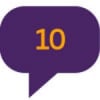Alzheimer’s

I was diagnosed with Alzheimer’s about 6 months ago. Is anyone being treated with Kisunla? I started infusions about four months ago. After each infusion I get terrible headaches for about two days.
Comments
-
ChaseCasey-
I hope you're letting your doctor, or at least the staff at the infusion center, know. It could be serious
Larry
0 -
0
-
I was diagnosed 3 mo. ago, and have decided to give myself 6 mo. to see if I'm having any noticiable progression. I plan to re-evaluate then on the infusions. How are you doing?
0 -
I'm getting Kisunla. I get a brief headache right afterwards, but had a terrible headache, nausea, and dizziness 2 weeks later. I was worried it was ARIA and headed out to the emergency room. But, no, nothing there. I am having trouble sleeping - does anyone else have that problem
1 -
I'm not a medical expert, but you might want to consult a Doctor about this strategy. As a reminder, Alzheimer's disease is characterized by two big changes in your brain: amyloid plaque and tau tangles. The first item (amyloid plaque) starts appearing in the brain's of people with AD more than a decade before any symptoms develop. The two newly approved drugs for treating AD (Leqembi & Kisunla) both remove amyloid plaque, and they somewhat slow the growth rate of tau tangles. In their respective clinical trials, both drugs worked best for those early in the disease progression (specifically no/low amounts of tau tangles). So the longer you wait to start treatment, the less effective your treatment with an anti-amyloid medication may be.
0 -
How to decide which infusion is best, Lequembi or Kisunla?
0 -
That is like asking which is best, a Ford or a GM car? There are some characteristics for Kisunla which may drive some people to that option, other characteristics for Leqembi which might drive folks to select that drug. I didn't have a choice, as Leqembi was the only drug on the market when I was diagnosed.
In terms of outcome, both drugs reduce amyloid plaque in the brain. One strategy might be to dive deep into the amyloid clearance rates for the two drugs. But that isn't an easy apples-to-oranges comparison. In the Phase 3 trial for Kisunla, they conducted regular amyloid PET scans to determine how much amyloid remained in the brains of those on the drug. There is no direct comparison to the Phase 3 trial for Leqembi (as Eisai didn't conduct regular amyloid PET scans on the participants).
Another approach would be to look at how much the drug slowed cognitive decline during the Phase 3 trial compared to placebo: 27% slowing for Leqembi (per the CDR-SB cognitive test) vs 29% for Kisunla, a very small difference.
You can look at the ARIA rates (brain bleeding / swelling). In the Phase 3 trial, Kisunla had higher ARIA rates compared with Leqembi (i.e. Kisunla resulted in more problems with brain swelling / bleeding). However, since then, Eli Lilly has gotten FDA approval to modify the Kisunla initial dosing strategy. This updated strategy results in reducing the ARIA rates for Kisunla, to be more in line with the rates for Leqembi.
One big difference is infusion frequency: every 2 weeks for Leqembi and every 4 weeks for KIsunla.
Finally, there is treatment duration. Kisunla treatment continues until amyloid plaque levels are reduced below a predefined threshold. In the Phase 3 trial, 17% stopped taking Kisunla at 6 months, 47% at 12 months, and 69% at 18 months. This strategy for Kisunla seems somewhat controversial, some Doctors are apparently recommending continuing treatments with Kisunla even after amyloid clearance. As a practical matter, this strategy requires multiple amyloid PET scans to check your amyloid plaque level and determine if it is time to stop treatment. These tests are expensive, and expose you to radiation (used in the marker which attaches itself to amyloid which the scanner then detects).
The recommendation for Leqembi is to continue treatment until the disease has progressed to the point where the treatments are no longer effective. Specifically, after an initial treatment with Leqembi for 18 months every two weeks, the recommendation is to switch to maintenance dosing every four weeks via an infusion. Starting later this week, Eisai will offer a subcutaneous version of Leqembi for maintenance dosing, with the shots adminsitered weekly. Part of the rationale for Leqembi maintenance dosing is a different method of action of the active drug compared with Kisunla. Leqembi removes both amyloid plaque and amyloid protofibrils, while Kisunla soley removes amyloid plaque. Amylod protofibrils are also bad for neurons and your brain.0 -
Thank you so much for sharing. I plan to start infusions soon. Are you getting infusions now? If so? Which one? And how are you doing. How long since your diagnosis?
0 -
I had my 34th infusion of Leqembi on Monday. After my 22nd infusion (i.e. around 11 months after starting treatment) I scored the same on a cognitive test conducted by my Neurologist. I was diagnosed with MCI in April 2024 and started on Leqembi in June 2024.
I haven't had any reactions to the infusions, I walk out of the infusion center feeling the same as when I walked into the infusion center. That isn't to say I wasn't nervous for the first few infusions. I'm not a big fan of needles, and the statistics with ARIA were somewhat scary.0
Commonly Used Abbreviations
DH = Dear Husband
DW= Dear Wife, Darling Wife
LO = Loved One
ES = Early Stage
EO = Early Onset
FTD = Frontotemporal Dementia
VD = Vascular Dementia
MC = Memory Care
AL = Assisted Living
POA = Power of Attorney
Read more
Categories
- All Categories
- 585 Living With Alzheimer's or Dementia
- 312 I Am Living With Alzheimer's or Other Dementia
- 273 I Am Living With Younger Onset Alzheimer's
- 16.8K Supporting Someone Living with Dementia
- 5.6K I Am a Caregiver (General Topics)
- 8.2K Caring For a Spouse or Partner
- 2.7K Caring for a Parent
- 225 Caring Long Distance
- 150 Supporting Those Who Have Lost Someone
- 17 Discusiones en Español
- 5 Vivir con Alzheimer u Otra Demencia
- 4 Vivo con Alzheimer u Otra Demencia
- 1 Vivo con Alzheimer de Inicio Más Joven
- 12 Prestación de Cuidado
- 3 Soy Cuidador (Temas Generales)
- 8 Cuidar de un Padre
- 23 ALZConnected Resources
- View Discussions For People Living with Dementia
- View Discussions for Caregivers
- Discusiones en Español
- Browse All Discussions
- Dementia Resources
- 8 Account Assistance
- 15 Help




